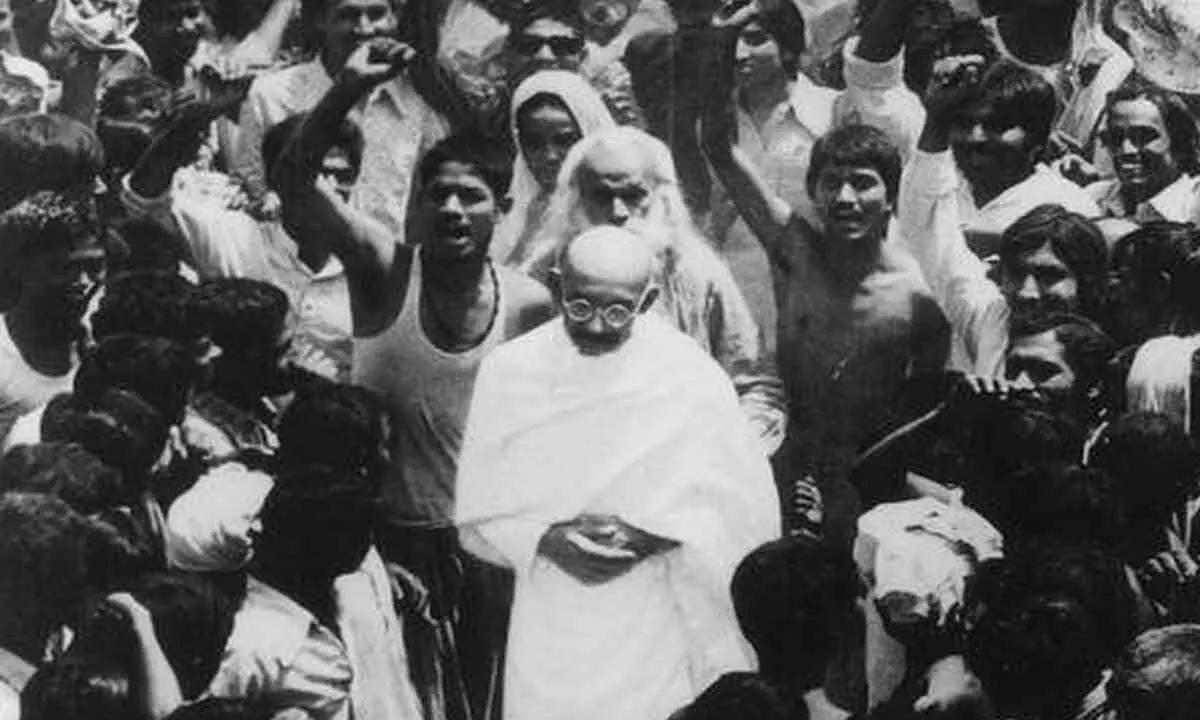Why did Mahatma Gandhi go to Champaran?

Gandhiji first met Rajendra Babu for the first time in Champaran. Babu Rajendra Prasad writes in his autobiography: "Many Englishmen had settled in Champaran and had been engaged in the cultivation of indigo for more than a hundred years. Wherever indigo could be grown in the district, they had set up their factories. A large part of the cultivable land belonged to them and they did their own cultivation.
The white planters had become agents of the Raj for the realization of land revenue from most of the villages of the Estate and such villages had gradually come under their control. When the Raj, badly in need of money, raised a loan in England with the help of the white planters, it mortgaged most of its villages with them. In many villages they acquired what was called the 'mokarry' right.....In those villages where they did not have this 'mokarri' right, they could enjoy the income therefrom after paying the fixed rent to the Estate only for a term of years. When once the term was over any increase or addition to the income would accrue to the estate and it was open to the Estate to give or not give a fresh lease. Also if it decided to give a fresh lease to the planter it could fex new terms regulating the amount of annual payment to the Estate and the period of the lease. The planters began forcing the cultivators to grow indigo for them".
There were clashes between the planters and cultivators and violence did happen often but the former was always dominant and inflicted severe tragedy on the latter.
Meanwhile, Germany discovered a process of manufacturing synthetic dyes which were considerably cheaper than dyes obtained from indigo. Rajendra Prasad recalls "the price of indigo steeply declined, and the planters' profits dwindled. So, to maintain their income, they applied the squeeze on the poor cultivators. For this they resorted to the clause in the Tenancy Act which permitted release of the cultivators from the obligation to cultivate indigo if they agreed to pay increased revenue. But the farmers had got wind of the fact that indigo was no more profitable to the planters and they would have to give up its cultivation in any case. They were, therefore, not anxious to bargain for a release from their obligations.
The planters, however, could not be stopped from having their way. They began forcibly to release the land and on their own terms. In the 'mokarri' villages, the kisans were made to sign agreements under duress agreeing to increased rent. In non-mokarri villages, where the increased rent accrued to the Estate, the planters realised large amounts in cash. When a tenant was unable to pay cash, the planters got a promissory note executed by him. By these methods, the planters collected nearly Rs 25 lakhs. In the areas where rent was not all suitable for indigo, the planters resorted to other means to extort money from the tillers. They realised all kinds of obsolete taxes or taxes forbidden by law.``
Circumstances changed as soon as war broke out in Europe and the import of foreign dyes stopped. Indigo was again a profitable product and the planters began forcing the tenants to go for it despite having released them earlier.
When Gandhi was being much sought after by the farmers, C F Andrews came to Motihari. He was a follower of Gandhi who had come to visit him on his way to Fiji. The farmers of the region were taken aback by an Englishmen amidst them freely mingling with one and all and always thought that he would be helpful to them in their negotiations with the government being a white man himself.
Rajendra Prasad says " Gandhiji diagnosed our troubles at once. He said 'the more you press on the Rev Andrews to stay, the more I am confirmed in my view that he should leave on his mission to Fiji at once. You are afraid of the government and the European planters. You imagine that if you have an Englishman in your midst, he will be a great support to you. That is the reason why you want him to stay. I want you to get rid of your fear of the Englishman and of your feeling that he is any different from you. You must have faith in yourself. yes, the Rev. Andrews must leave tomorrow".
It took another three to four years or even five years for the struggle to drive out the planters from Champaran. "The Champaran struggle was a fine rehearsal in the technique of Satyagraha '', Rajendra Prasad wrote and added it was a Satyagraha truly conducted.
















